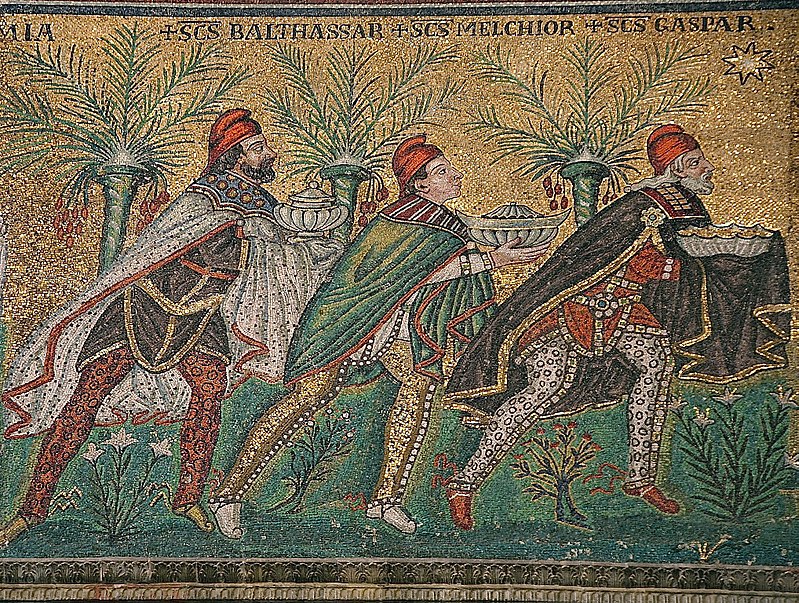
The world is charged with the grandeur of God.
It will flame out, like shining from shook foil…– Gerard Manley Hopkins
Next to Ordinary Time, Epiphany (from the Latin word meaning manifestation, or shining forth) may be the least observed season of the Christian calendar year, and yet its power to stagger us with mystery and animate our faith is hard to overstate.
As we continue to chart our course by way of this pilgrim map of the liturgical year, we have seen how Advent reveals the deepest truth of our humanity: how we were created to receive the seed of God and bear it forth for the sake of the world. Likewise, Christmas reveals the humble vulnerability of God condescended in matter and flesh to assume and redeem all that is broken and distant. The season of Epiphany now reveals Christ’s divinity shining forth from his humanity, freeing us from parochial theologies and revealing a scope of salvation too bright for human eyes. Epiphany lifts our eyes from immediate personal, familial and tribal spheres to demand that we include in our vision “all the ends of the earth” (Psalm 98:3).
Liturgically, Epiphany refers not only to the day itself, but to the Church season that follows – a season of varied length according to various traditions. The larger season unites several events in the life of Christ that serve as “signs” that manifest the glory of God.

In the Christian West, Epiphany falls on the 12th day after Christmas (January 6) and celebrates the coming of the Magi to pay homage to the child Jesus. The fact that pagan outsiders would have been among the first to apprehend and respond to God’s great self-revelation must have been a shock to a people who considered themselves secure and unique insiders. Yet there is no inconsistency here with ancient scriptures, which clearly teach that if there are such things as insiders, they are blessed to be a blessing – not privileged to set themselves above others, to hoard the gifts of God or to arrogate power, but rather, as Advent teaches, to co-operate with God in the project of new life for the sake of the world.
The second major feast (or sign) of Epiphany, emphasized more by the Eastern Church, falls on the Sunday after January 6 and recalls the baptism of Christ. Here is a revelation as staggering as the incarnation. As Jesus comes out of the waters of his human baptism, thereby cleansing all matter stained with sin and brokenness, the heavens split, the Spirit descends and the voice of the Father declares Jesus’ divine sonship. For the first time in history, God’s oneness is revealed not as a numerical oneness, but as a communal oneness: a com-unity. Time stops as we see this tableau of the Father, Son and Spirit. Our own spirits swoon as the imagination begins to apprehend the far-reaching consequences of this revelation that God is com-unity, and we’ve been made in the image of God.
The third major feast, marked on the second Sunday after Epiphany, celebrates the wedding feast of Cana, where Jesus performs his first public miracle, turning water to wine. As an example of Christ’s divinity shining through his humanity, this feast is self-explanatory: Jesus is Lord of his creation and Master of matter. The circumstances of the miracle also reveal a celebratory inclination and largesse in God’s nature. But the ancient Church also saw a deeper meaning here in how the wedding at Cana foreshadows the divine wedding of Christ with humanity: Christ’s nuptials with the Church. As the Catholic liturgy summarizes the various feasts and prophetically proclaims, “This day the Church is joined to her heavenly Spouse, for Christ has cleansed her crimes in the Jordan. With gifts the Magi hasten to the royal nuptials, and the guests are gladdened with wine made from water.”
Another important gospel reading in Epiphany recalls Nathanael’s awakening, when he declared, “Rabbi, thou art the Son of God! Thou art the king of Israel!” (John 1:49). This disciple, whose “sudden leap of understanding – outpacing reason and teaching – leapt ahead of all the other disciples to an understanding and certainty that even Peter would not attain for another three years.”
We’ll also look at the Feast of Saint Paul, Candlemas, and the Feast of Abba Antony. In closing, we’ll let the Feast of Saint Valentine help us shift gears and prepare for Lent.
It has been said that Epiphany extends the colours of Christmas. Gerard Manley Hopkins wrote, “The world is charged with the grandeur of God. / It will flame out, like shining from shook foil.” No words could more aptly describe this season of Epiphany, the shining forth of God’s glory through his son Jesus, and through all those who apprehend his radiance.
DIAMONDS FROM THE OTHER SIDE
Music by Steve Bell
Lyrics by Steve Bell and Carolyn Arends
Appears on the 2001 CD release: Steve Bell / Waiting for Aidan
Purchase Original Album Purchase Pilgrim Year Companion CD
From august shores and summers past
Low sun-fire on the liquid glass
From facets on the surface of the bayBurns the beauty deep inside
Returning when I close my eyes
To find me when I’m time and miles away
Calling me back againAlmost too much for human eyes
Diamonds from the other sideDeep the heavens, deep the dark
That hide the earth to show the spark
Of stars that wait on the other side of dayNow you see them, now you don’t
Regardless of the clouds you know
To close your eyes and there they are again
Holding you in their gazeAlmost too much for human eyes
Diamonds from the other side